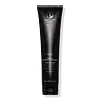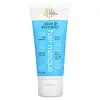What's inside
What's inside
 Key Ingredients
Key Ingredients

No key ingredients
 Benefits
Benefits

 Concerns
Concerns

 Ingredients Side-by-side
Ingredients Side-by-side

Water
Skin ConditioningCetearyl Alcohol
EmollientIsohexadecane
EmollientBehentrimonium Chloride
PreservativeGlycerin
HumectantAmodimethicone
Cetyl Esters
EmollientKeratin
Skin ConditioningHydrolyzed Keratin
HumectantOxidized Keratin
Skin ConditioningPanthenol
Skin ConditioningHedychium Coronarium Root Extract
MaskingWheat Amino Acids
Skin ConditioningDimethicone
EmollientStearamidopropyl Dimethylamine
EmulsifyingPolysilicone-15
UV FilterCitric Acid
BufferingHydrolyzed Vegetable Protein Pg-Propyl Silanetriol
Skin ConditioningTrideceth-12
EmulsifyingCetrimonium Chloride
AntimicrobialDisodium EDTA
Isopropyl Alcohol
SolventBehentrimonium Methosulfate
Polyquaternium-55
Phenoxyethanol
PreservativePotassium Sorbate
PreservativeSodium Benzoate
MaskingMethylchloroisothiazolinone
PreservativeMethylisothiazolinone
PreservativeMagnesium Chloride
Magnesium Nitrate
Parfum
MaskingLimonene
PerfumingBenzyl Salicylate
PerfumingHexyl Cinnamal
PerfumingLinalool
PerfumingWater, Cetearyl Alcohol, Isohexadecane, Behentrimonium Chloride, Glycerin, Amodimethicone, Cetyl Esters, Keratin, Hydrolyzed Keratin, Oxidized Keratin, Panthenol, Hedychium Coronarium Root Extract, Wheat Amino Acids, Dimethicone, Stearamidopropyl Dimethylamine, Polysilicone-15, Citric Acid, Hydrolyzed Vegetable Protein Pg-Propyl Silanetriol, Trideceth-12, Cetrimonium Chloride, Disodium EDTA, Isopropyl Alcohol, Behentrimonium Methosulfate, Polyquaternium-55, Phenoxyethanol, Potassium Sorbate, Sodium Benzoate, Methylchloroisothiazolinone, Methylisothiazolinone, Magnesium Chloride, Magnesium Nitrate, Parfum, Limonene, Benzyl Salicylate, Hexyl Cinnamal, Linalool
Water
Skin ConditioningCetearyl Alcohol
EmollientBehentrimonium Chloride
PreservativeAmodimethicone
Trideceth-12
EmulsifyingCetrimonium Chloride
AntimicrobialPanthenol
Skin ConditioningPersea Gratissima Oil
Skin ConditioningCocos Nucifera Oil
MaskingOlea Europaea Fruit Oil
MaskingHydrolyzed Silk
HumectantEthylhexylglycerin
Skin ConditioningCetyl Esters
EmollientCitric Acid
BufferingPotassium Sorbate
PreservativePhenoxyethanol
PreservativeParfum
MaskingIngredients Explained
These ingredients are found in both products.
Ingredients higher up in an ingredient list are typically present in a larger amount.
This water-soluble silicone is used for its hydrating and softening properties. It is used to add a silky feel to skincare products and has great benefits for haircare.
In haircare, this ingredient:
- Adds shine
- Protects color
- Offers thermal protection
- Boosts hair strength
- Does not build up as easily
This ingredient is a preservative and often used for it's anti-static properties. You'll most likely see this ingredient in hair conditioners.
It does not cause irritation or sensitization in leave-on products at 1-5%.
Cetearyl alcohol is a mixture of two fatty alcohols: cetyl alcohol and stearyl alcohol. It is mainly used as an emulsifier. Emulsifiers help prevent the separation of oils and products. Due to its composition, it can also be used to thicken a product or help create foam.
Cetearyl alcohol is an emollient. Emollients help soothe and hydrate the skin by trapping moisture.
Studies show Cetearyl alcohol is non-toxic and non-irritating. The FDA allows products labeled "alcohol-free" to have fatty alcohols.
This ingredient is usually derived from plant oils such as palm, vegetable, or coconut oils. There is debate on whether this ingredient will cause acne.
Due to the fatty acid base, this ingredient may not be Malassezia folliculitis safe.
Learn more about Cetearyl AlcoholThis ingredient is a preservative, antimicrobial, and emulsifier. It is often used in cosmetics for its ability to cleanse, condition, and reduce static.
Cetrimonium chloride is a quaternary ammonium salt, meaning it has a water-soluble structure.
Cetyl Esters is a synthetic wax made up of mostly fatty acids and fatty alcohols. It is strcturally similar to wax taken from whales.
As an emollient, it creates a thin barrier on the skin. This barrier prevents moisture from escaping.
This ingredient may not be fungal-acne safe.
Learn more about Cetyl EstersCitric Acid is an alpha hydroxy acid (AHA) naturally found in citrus fruits like oranges, lemons, and limes.
Like other AHAs, citric acid can exfoliate skin by breaking down the bonds that hold dead skin cells together. This helps reveal smoother and brighter skin underneath.
However, this exfoliating effect only happens at high concentrations (20%) which can be hard to find in cosmetic products.
Due to this, citric acid is usually included in small amounts as a pH adjuster. This helps keep products slightly more acidic and compatible with skin's natural pH.
In skincare formulas, citric acid can:
While it can provide some skin benefits, research shows lactic acid and glycolic acid are generally more effective and less irritating exfoliants.
Most citric acid used in skincare today is made by fermenting sugars (usually from molasses). This synthetic version is identical to the natural citrus form but easier to stabilize and use in formulations.
Read more about some other popular AHA's here:
Learn more about Citric AcidPanthenol is a common ingredient that helps hydrate and soothe the skin. It is found naturally in our skin and hair.
There are two forms of panthenol: D and L.
D-panthenol is also known as dexpanthenol. Most cosmetics use dexpanthenol or a mixture of D and L-panthenol.
Panthenol is famous due to its ability to go deeper into the skin's layers. Using this ingredient has numerous pros (and no cons):
Like hyaluronic acid, panthenol is a humectant. Humectants are able to bind and hold large amounts of water to keep skin hydrated.
This ingredient works well for wound healing. It works by increasing tissue in the wound and helps close open wounds.
Once oxidized, panthenol converts to pantothenic acid. Panthothenic acid is found in all living cells.
This ingredient is also referred to as pro-vitamin B5.
Learn more about PanthenolParfum is a catch-all term for an ingredient or more that is used to give a scent to products.
Also called "fragrance", this ingredient can be a blend of hundreds of chemicals or plant oils. This means every product with "fragrance" or "parfum" in the ingredients list is a different mixture.
For instance, Habanolide is a proprietary trade name for a specific aroma chemical. When used as a fragrance ingredient in cosmetics, most aroma chemicals fall under the broad labeling category of “FRAGRANCE” or “PARFUM” according to EU and US regulations.
The term 'parfum' or 'fragrance' is not regulated in many countries. In many cases, it is up to the brand to define this term.
For instance, many brands choose to label themselves as "fragrance-free" because they are not using synthetic fragrances. However, their products may still contain ingredients such as essential oils that are considered a fragrance by INCI standards.
One example is Calendula flower extract. Calendula is an essential oil that still imparts a scent or 'fragrance'.
Depending on the blend, the ingredients in the mixture can cause allergies and sensitivities on the skin. Some ingredients that are known EU allergens include linalool and citronellol.
Parfum can also be used to mask or cover an unpleasant scent.
The bottom line is: not all fragrances/parfum/ingredients are created equally. If you are worried about fragrances, we recommend taking a closer look at an ingredient. And of course, we always recommend speaking with a professional.
Learn more about ParfumPhenoxyethanol is a preservative that has germicide, antimicrobial, and aromatic properties. Studies show that phenoxyethanol can prevent microbial growth. By itself, it has a scent that is similar to that of a rose.
It's often used in formulations along with Caprylyl Glycol to preserve the shelf life of products.
Potassium Sorbate is a preservative used to prevent yeast and mold in products. It is commonly found in both cosmetic and food products.
This ingredient comes from potassium salt derived from sorbic acid. Sorbic acid is a natural antibiotic and effective against fungus.
Both potassium sorbate and sorbic acid can be found in baked goods, cheeses, dried meats, dried fruit, ice cream, pickles, wine, yogurt, and more.
You'll often find this ingredient used with other preservatives.
Learn more about Potassium SorbateWe don't have a description for Trideceth-12 yet.
Water. It's the most common cosmetic ingredient of all. You'll usually see it at the top of ingredient lists, meaning that it makes up the largest part of the product.
So why is it so popular? Water most often acts as a solvent - this means that it helps dissolve other ingredients into the formulation.
You'll also recognize water as that liquid we all need to stay alive. If you see this, drink a glass of water. Stay hydrated!
Learn more about Water